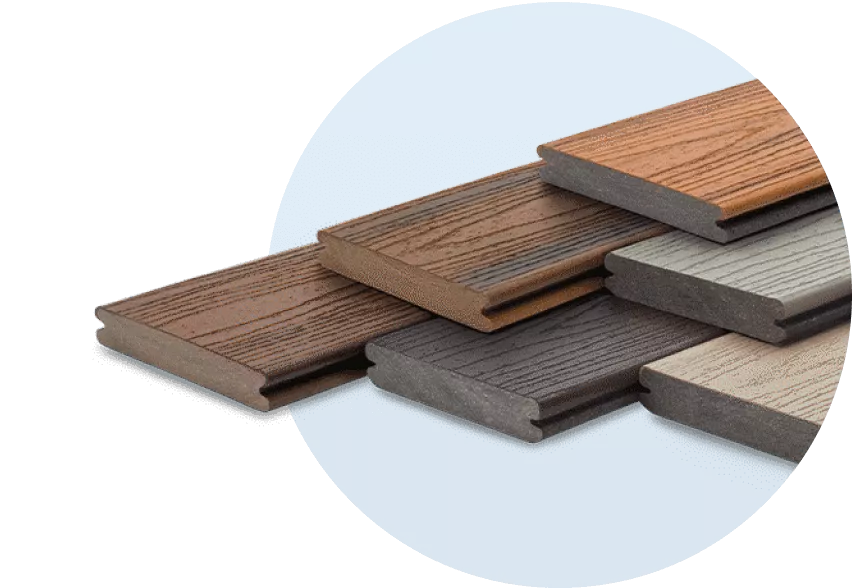Deck Board & Materials Calculator in 2025
With the frame of your deck built, one of the final steps is overlaying the substructure with decking materials. Depending on the finished look you want to achieve, you’ll need to determine just how much material you’ll need to carry out your deck design plans.
Once you know how much material you’ll need, use our pricing calculator to get a feel for the cost of materials, depending on whether you plan to use a specific species of wood, composite, or other type of material.
This calculator will tell you:
- number of boards (by length) required
- Required number of boards (including waste factor)
- number of screws and hidden fasteners needed
- number of boards (by length) required
- Required number of boards (including waste factor)
- number of screws and hidden fasteners needed
Content can go here
| 1 |
Total Square Feet |
Total Square Feet:
OR
DIMENSIONS
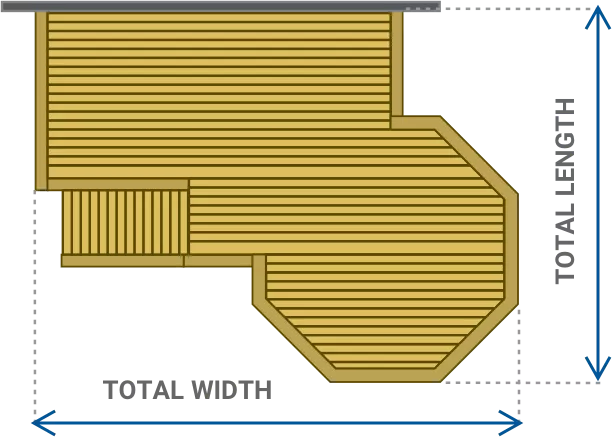
| 2 |
Board Size |
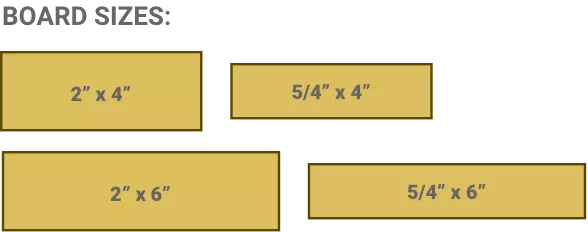
| 3 |
Joist Spacing |
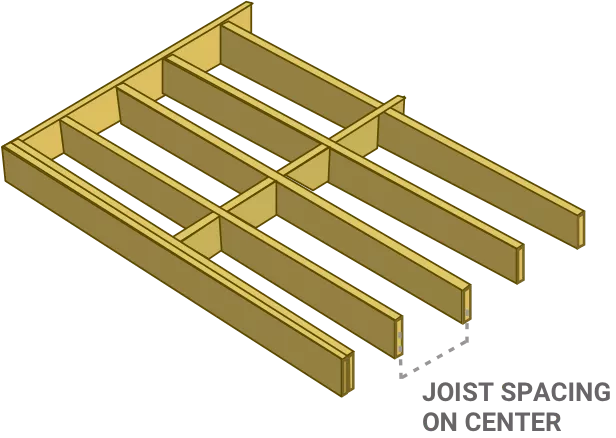
| 4 |
Decking Angle |
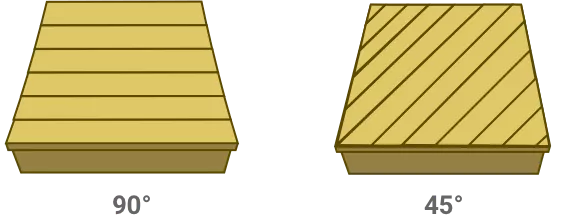
| 5 |
Total Length of Perimeter |
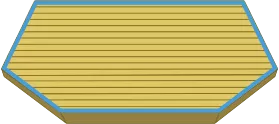
Your Deck Board & Materials Results
Results
| Board Options: | Required: | Waste: | Required + Waste: |
|---|---|---|---|
| {{ row.BoardOption }} | {{ row.Required }} | {{ row.Waste }}% | {{ row.RequiredAndWaste }} |
Board Screws Required:
{{ Result.Results.TotalScrews }}
Hidden Fasteners Required:
{{ Result.Results.TotalHiddenFasteners }}

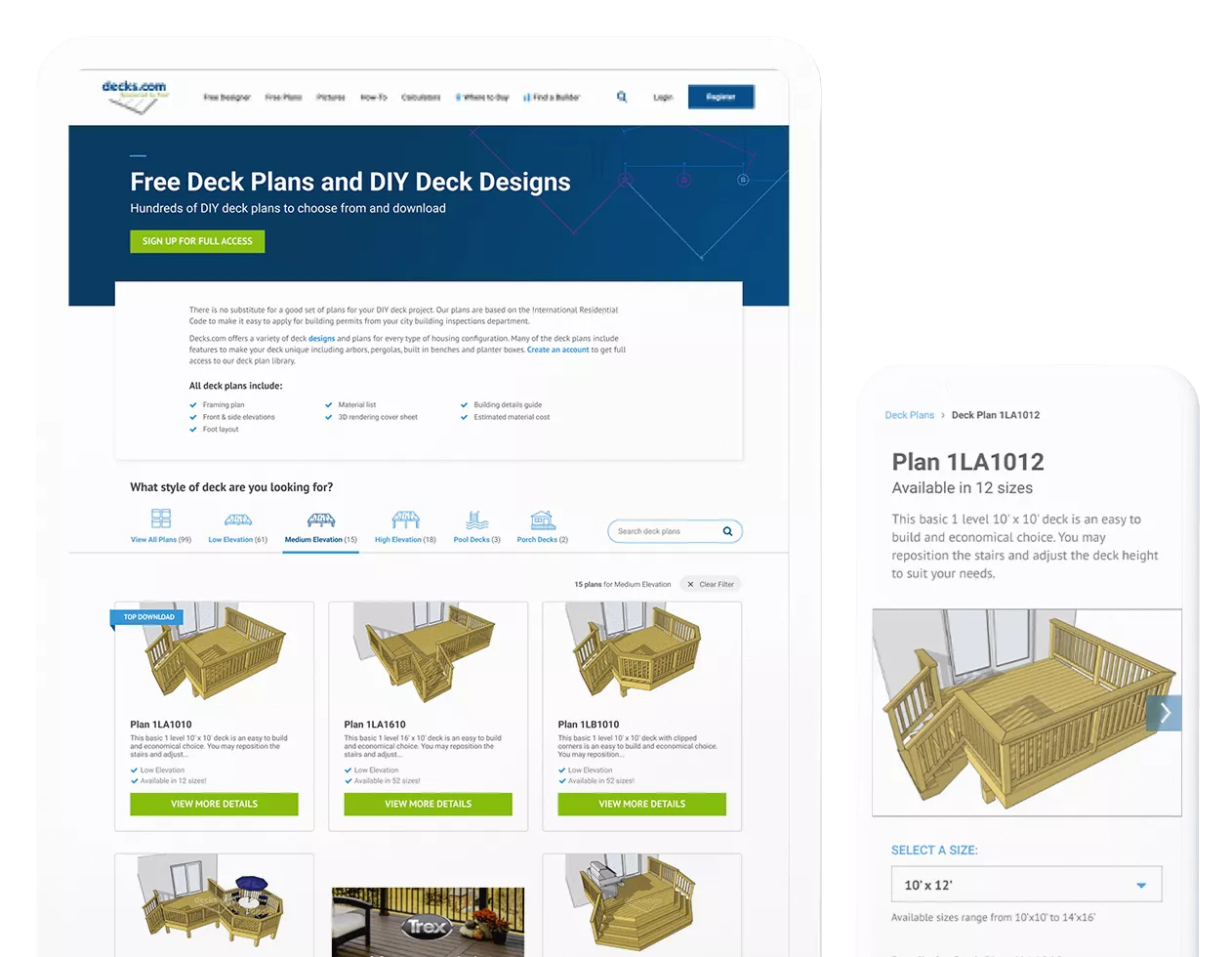
Explore More Deck Plans
Choose from hundreds of free downloadable deck plans based on the International Residential Code
Calculator Page Ads Macro
- Ad Zone: Calculator Feature Page
- Instances Rendered: 3
How Many Deck Boards Do I Need?
Choosing boards to form your deck flooring is one part aesthetics and one part mechanics. Beyond selecting the type of wood or composite decking materials, you’ll also need to know how many boards—and what size—you’ll need to create the flooring for your deck.
There are several factors that determine how many boards you’ll need to form your flooring:
- Size of your deck, which can be determined in either:
- Total square footage
- Length x Width in feet and inches (total length of your deck’s perimeter)
- Board size
- Spacing between deck boards
- Most composite decks call for spacers that create a consistent spacing.
- Wood decking can shrink and the spacing should be no more than ⅛-inch if the wood is saturated with preservatives. The wood will shrink over time and the gap will normally widen to about 1/4-inch.
- The angle of your decking
- 90° to the joist (giving a horizontal, straight-across look)
- 45° to the joist (giving a diagonal, slanted look to your floor boards)
- Note: This style will add another 10% to 15% waste on top of normal waste.
- Chevron, herringbone, inlays, or other more intricate patterns for deck flooring will require more materials and may cost more in terms of labor and materials. You will also want to add an additional 10% to 15% waste beyond normal waste.
What Are Common Deck Board Sizes?
Deck boards are commonly referred to by their nominal thickness and width, such as the most common size, 1x6. The actual thickness may be ¾ - 1” net by a net width of 5-¼” to 5-½”. The most important thing, however, is that the board you’ve selected is approved by your local municipality. Other common nominal sizes are 1x4, 2x6 and 2x8.
![]()

Deck boards come in a variety of sizes, however, the most common size is the standard 6-inch width deck board. Other common deck board widths are 4” and you may find some 8-inch-wide deck . Be aware that using wide solid-wood decking can cause significant ponding issues as the flat-grained wood can cup, creating a shallow depression within each piece of decking. Cupping will be less with boards of narrow width. You can eliminate cupping using wood decking that has vertical grain instead of flat grain.
What Materials Do I Need for Decking?
Depending on your budget, aesthetics, and availability of materials, there are a many choices to choose from, including:
- Pressure-treated lumber
- Composite decking
- PVC decking
- Exotic hardwoods (such as Ipe, Tigerwood, and Mahogany)
- Framing lumber — such as Cedar, Pine, Fir, or Spruce. Regardless of the type of planks, you may want to comprise the surface of your deck for visual appeal, a sturdy frame is essential to the safety and longevity of your deck.
In addition to decking materials, you’ll also need several tools to ensure accuracy and make the process of building your deck easier:
- Tape measure (25’ or higher)
- Framing squares
- Digger (for larger areas)
- Shovel
- Clamps
- Hammer
- Power nailer/nail gun
- Cordless drill
- Sander (for smoothing) areas
- A variety of saws (table saw, circular saw, jigsaw)
How Do I Measure a Deck?
To determine your deck’s measurements, you’ll want to measure its length and width from the longest point – even if there are shorter angles and niches within its structure. From there, multiply the length and width together to arrive at the total square footage of your deck.
For instance, if the longest point of your deck is 20 ft and the widest point of your deck is 16 feet, your deck’s total square footage would be 320 square feet.
20 ft (length) x 16 ft (width) = 320 sq. ft.
When building a deck from the ground up, it’s important to consider how big your backyard or the area where you plan to build your deck is, or if you’ll need stairs. Head over to our free deck designer to get started on planning to design your dream deck.


